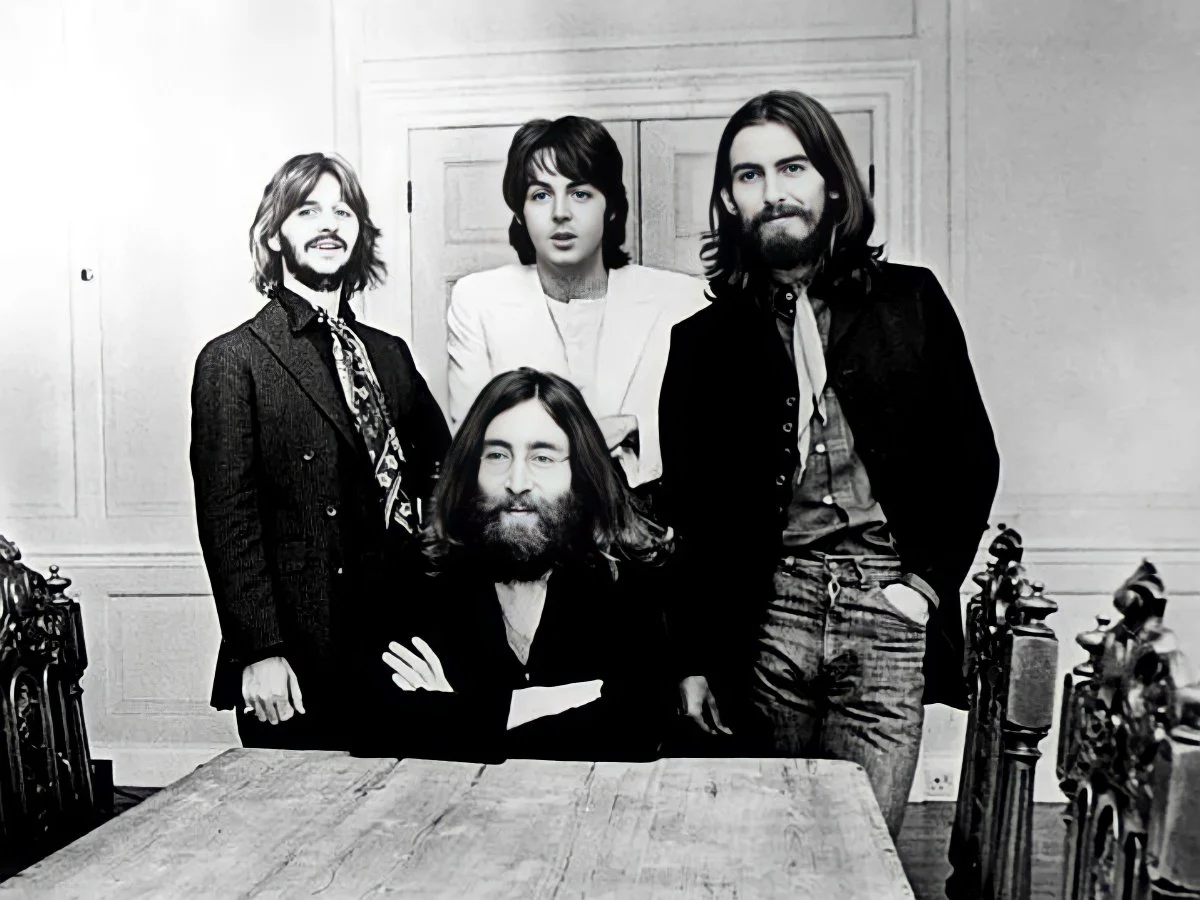☀️ Introduction: The Eternal Glow of a Beatles Classic
It’s the song that has lifted hearts for generations. A melody so pure, so optimistic, and so quietly revolutionary that it’s become almost synonymous with rebirth, hope, and the simple joy of a sunny day.
“Here Comes the Sun” by The Beatles is one of the most beloved songs in music history — a George Harrison masterpiece that feels as natural and eternal as the sunrise itself. But what if we told you that beneath the sweetness, somewhere in the golden folds of this iconic track, lies a glaring mistake — one so odd that even the band almost ignored it?
And no, it’s not about a wrong chord or a missed lyric. We’re talking about something almost… childlike. Some call it a slip. Others call it brilliance. But one thing’s certain: once you hear it, you can’t unhear it.
Let’s explore the strange charm of what some fans now refer to as the “infant sounds” hidden in ‘Here Comes the Sun.’
🌸 The Song That Saved a Soul
To understand why this tiny mistake matters, you have to understand the emotional weight of “Here Comes the Sun.”
Written in 1969, during a period of exhaustion and inner conflict within The Beatles, George Harrison retreated to Eric Clapton’s garden to clear his head. In that tranquil moment, as winter gave way to spring, Harrison picked up a guitar and began writing what would become one of the most hopeful songs in the band’s catalog.
That lightness, that breath of peace — it’s audible in every note.
The arpeggiated guitar. The gentle tempo. The harmonies that feel like a sunrise pouring over the English countryside.
But listen closely, especially around the middle of the song, and you might catch something… peculiar.
👂 The Moment You Can’t Miss
It’s around the 1:45–1:50 mark in the original recording of “Here Comes the Sun” that many listeners report hearing something that doesn’t quite fit. Not a lyric. Not an instrument. But a kind of cooing — something resembling a baby’s murmur or soft giggle.
It’s faint, subtle, and buried under the mix. Some listeners describe it as a high-pitched “ahh” or “ooo,” totally out of sync with the musical arrangement. Others say it sounds like someone — maybe even Harrison — makes a spontaneous noise in the background. A human element. Imperfect. Warm. But… still a mistake?
Many producers and audiophiles, after isolating the track, agree: it’s likely an accidental vocal noise, perhaps made by a band member or engineer. In the analog world of the late 1960s, it wasn’t uncommon for small sounds to sneak into the final take — especially in a song recorded live in parts.
🤱 “Kind of Infant Sounds”: Fans Weigh In
What’s striking is how divided Beatles fans are over this odd inclusion. On fan forums and YouTube comments, some call it a charming imperfection, likening it to hearing a creaky chair in a jazz recording or a breath before a powerful vocal.
Others are more skeptical, calling it distracting or out of place in such a carefully constructed song.
One fan commented, “It’s like hearing a baby in the background while watching the sunset. It shouldn’t be there… but somehow, it makes it feel more alive.”
Another wrote, “I used to think it was a bird sound or a guitar effect. Now I’m convinced someone just made a baby noise in the studio and nobody caught it.”
Whether it was a yawn, a giggle, or just a weird audio anomaly, the so-called “infant sound” in Here Comes the Sun has become one of those hidden moments that turn casual listeners into obsessive re-players.
🎛️ Could It Have Been Fixed?
The Beatles, known for their studio perfectionism (especially by this point in their career), absolutely could have removed the sound. George Martin, their legendary producer, was meticulous. And Abbey Road Studios was one of the most advanced recording spaces in the world at the time.

So why leave it in?
It may have simply slipped through unnoticed. Or maybe it was embraced as part of the human texture of the song. After all, Here Comes the Sun isn’t about mechanical perfection. It’s about emotional resonance. And sometimes, a little crack in the glass lets in more light.
🎨 Art Through Imperfection
There’s something beautiful about how this “mistake” has become part of the Here Comes the Sun experience.
Much like the Beatles themselves — brilliant yet flawed, meticulous yet spontaneous — the song carries traces of real life. Of someone shifting in their seat, or humming absentmindedly. It reminds us that even the most polished works of art carry a fingerprint.
In a way, that strange sound captures the very spirit of George Harrison’s writing: unpolished truth in a world that demands perfection.
🔍 Easter Eggs and Hidden Details: A Beatles Tradition
It’s not unusual for Beatles songs to hide mysterious sounds, whispers, and cryptic messages. The band was known for embedding weird studio chatter, backwards vocals, and ambient noises in their work. From the haunting crescendo in A Day in the Life to the playful chaos of Revolution 9, their catalog is a treasure trove of sonic Easter eggs.
So perhaps the Here Comes the Sun mistake is just another hidden jewel — a kind of signature in sound, reminding us that The Beatles always valued feeling over flawlessness.
🧠 Psychology of the “Hidden Sound”
Why are we so obsessed with mistakes in famous songs?
Part of it lies in how we connect with music. When we discover a flaw in a classic, it brings the artist closer to us. They become human again. The song becomes alive, imperfect, and more emotionally rich.
It also gives us a sense of ownership. Once you’ve heard that little noise in Here Comes the Sun, you can’t wait to tell someone else about it. It’s your secret. Your discovery. That’s the magic of hidden imperfections — they transform a public song into a personal moment.
📣 Social Media Buzz: Share Your “Here Comes the Sun” Moment
If you’re the kind of listener who’s gone back to replay that moment over and over, you’re not alone.
On platforms like TikTok, users have started remixing the clip with zoom-ins and captions like:
“Did you hear the baby sound in this Beatles classic? 😲”
“When you realize ‘Here Comes the Sun’ has a glitch and it’s adorable.”
“George? Is that you giggling?”
These moments make the song trend again — not because of some marketing push, but because humans love the hidden, the strange, the imperfect.
And in a world of AI-mixed, pitch-perfect tracks, there’s something deeply comforting about a small mistake that made it onto one of the greatest songs ever written.
🎼 Final Notes: Light, Warmth, and a Baby Sound
Here Comes the Sun will always be a masterpiece — not despite its tiny mistake, but perhaps because of it.
That soft, unintentional sound is a testament to the magic of analog music. To the fact that sometimes, the best things are the ones you can’t plan, perfect, or polish away.
George Harrison gave us a song that still brings warmth into a chaotic world. And maybe, just maybe, that little infant sound is part of that warmth.
After all, what’s more hopeful than the laugh of a child? What’s more fitting for a song about the return of light?

